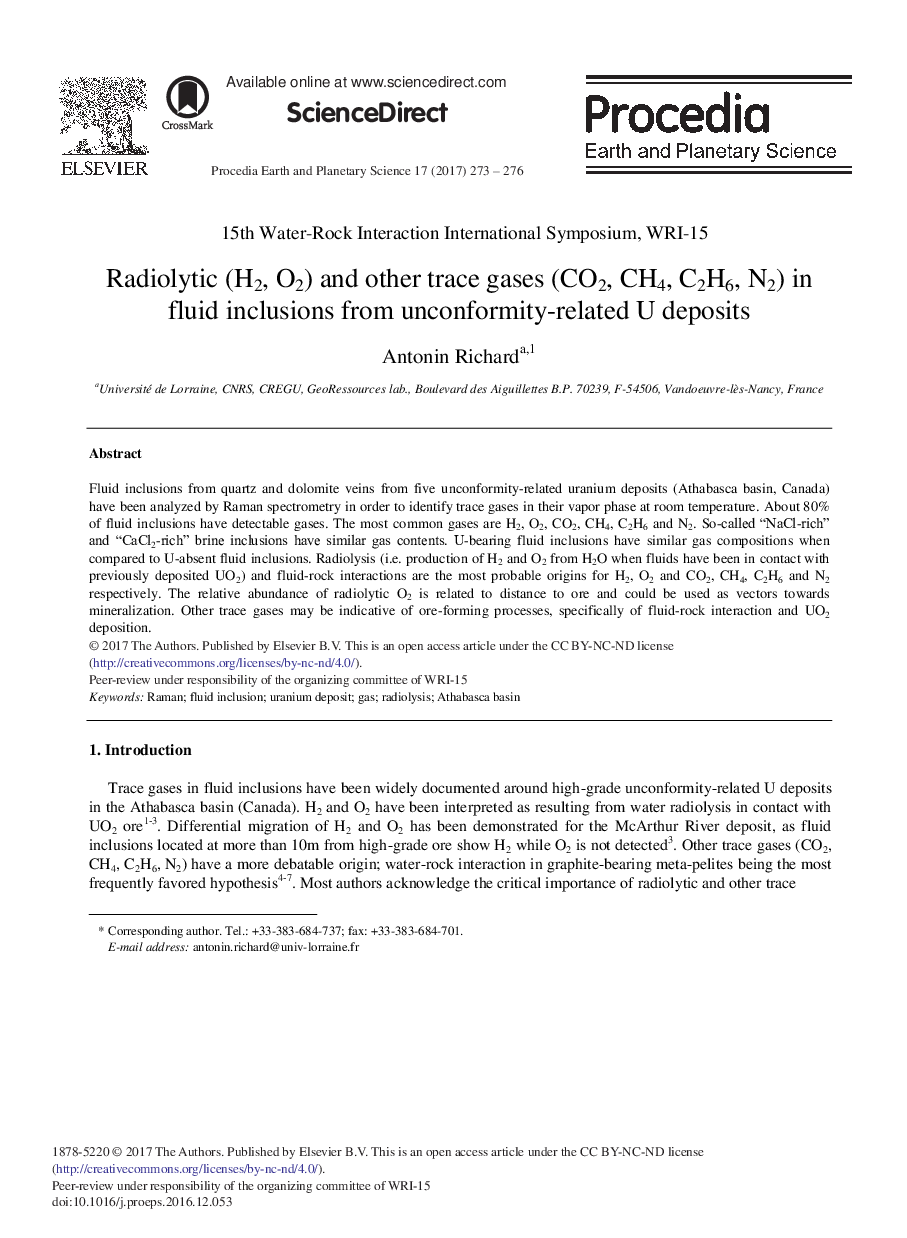| Article ID | Journal | Published Year | Pages | File Type |
|---|---|---|---|---|
| 5779287 | Procedia Earth and Planetary Science | 2017 | 4 Pages |
Abstract
Fluid inclusions from quartz and dolomite veins from five unconformity-related uranium deposits (Athabasca basin, Canada) have been analyzed by Raman spectrometry in order to identify trace gases in their vapor phase at room temperature. About 80% of fluid inclusions have detectable gases. The most common gases are H2, O2, CO2, CH4, C2H6 and N2. So-called “NaCl-rich” and “CaCl2-rich” brine inclusions have similar gas contents. U-bearing fluid inclusions have similar gas compositions when compared to U-absent fluid inclusions. Radiolysis (i.e. production of H2 and O2 from H2O when fluids have been in contact with previously deposited UO2) and fluid-rock interactions are the most probable origins for H2, O2 and CO2, CH4, C2H6 and N2 respectively. The relative abundance of radiolytic O2 is related to distance to ore and could be used as vectors towards mineralization. Other trace gases may be indicative of ore-forming processes, specifically of fluid-rock interaction and UO2 deposition.
Related Topics
Physical Sciences and Engineering
Earth and Planetary Sciences
Atmospheric Science
Authors
Antonin Richard,
